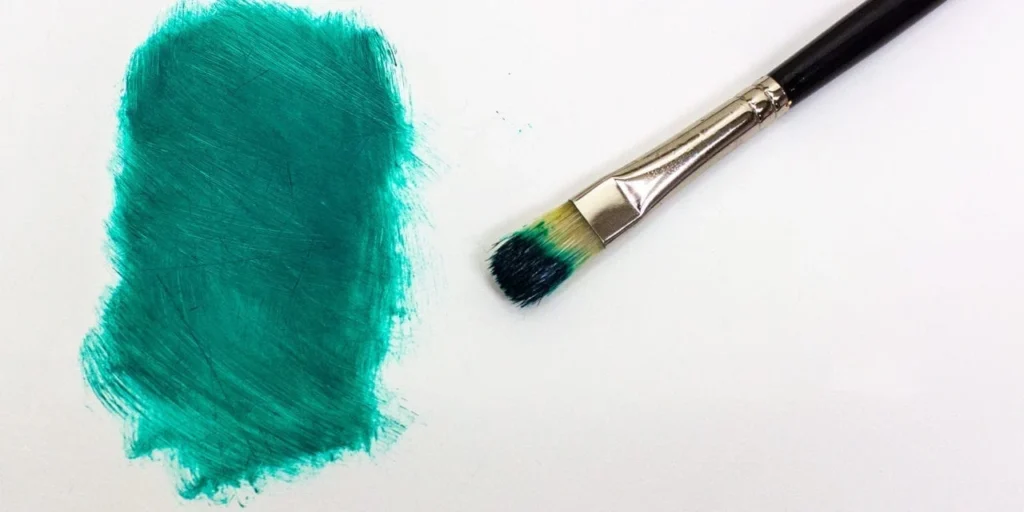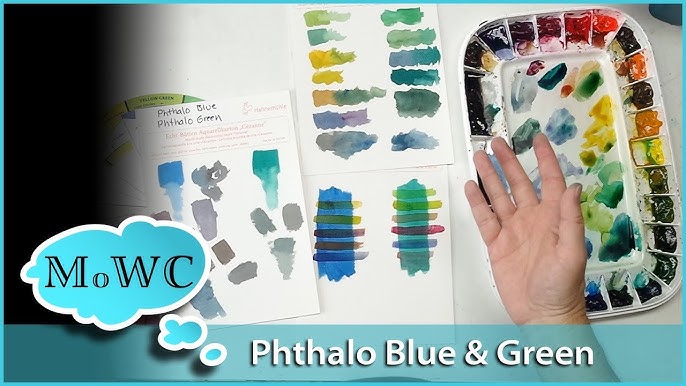
Phthalo Green is a vibrant and versatile synthetic pigment that has captivated artists worldwide. Renowned for its intense hue and remarkable tinting strength, it has become a staple in the palettes of painters working in various mediums, including acrylic, oil, and watercolor. In this detailed guide, we will explore the origins, properties, and uses of Phthalo Green in art while incorporating all essential keywords naturally and semantically.
What Is Phthalo Green?
Phthalo Green, chemically known as Pigment Green 7 (PG7), is a synthetic organic pigment derived from copper phthalocyanine. It was first introduced in the 1930s and quickly gained popularity due to its brilliance, transparency, and durability. This pigment is prized for its ability to produce a wide range of green shades, making it an indispensable tool for artists.
Composition and Origin of Phthalo Green
Phthalo Green’s chemical structure contributes to its unique properties. It is known for its excellent lightfastness and resistance to fading, ensuring longevity in artwork. The pigment’s origins trace back to advancements in chemical engineering, which enabled the creation of stable, vibrant pigments for professional use. Artists adopted it enthusiastically for its unmatched intensity and versatility.
Unique Properties of Phthalo Green
Phthalo Green is valued for several key properties:
- Transparency: Its transparent nature is ideal for glazing and layering techniques, allowing artists to build depth and luminosity.
- High Tinting Strength: A small amount of Phthalo Green can dominate color mixtures, creating strong and vivid effects.
- Durability: Its excellent lightfastness ensures that artworks retain their vibrancy over time.
- Versatility: This pigment is suitable for various painting mediums, such as acrylic, oil, and watercolor.
How Phthalo Green Is Used in Art
Phthalo Green’s versatility extends across multiple artistic techniques and mediums, making it a favorite among professional and beginner artists alike.
Applications in Different Painting Mediums
Phthalo Green adapts seamlessly to various painting methods:
- Acrylic Painting: Its quick-drying properties make it a reliable choice for artists who work with acrylics, offering consistent and vibrant results.
- Oil Painting: In oils, Phthalo Green’s strong tinting strength is ideal for dynamic compositions and creating lush landscapes.
- Watercolor Painting: Its transparency makes it a standout in watercolor painting, allowing artists to create luminous washes and delicate layers.
Techniques for Using Phthalo Green in Art
Phthalo Green is a versatile pigment that can be employed in various techniques:
- Glazing: Its transparent quality is perfect for creating subtle transitions and building up layers of color.
- Blending: Mix it with yellows to achieve warmer greens or blues for cooler shades, offering endless possibilities.
- Dry Brush Technique: Artists can use it to add texture and create intricate details in landscapes and abstract art.
The Role of Phthalo Green in Color Theory
Phthalo Green is integral to understanding and applying color theory in art. Its interaction with other colors opens up endless creative possibilities for artists.
How to Mix Colors with Phthalo Green
Phthalo Green is highly versatile when mixing with other pigments. Here are some examples:
- Combine with cadmium yellow to produce bright, grassy greens ideal for landscapes.
- Mix with ultramarine blue to create deep and rich teal shades.
- Blend with alizarin crimson to achieve muted, earthy tones suitable for natural subjects.
Complementary Colors and Effects
Pairing Phthalo Green with its complementary colors creates striking contrasts. For example:
- Use with reds or oranges to make vibrant highlights in floral or abstract compositions.
- Pair with muted tones for a balanced and harmonious palette in landscape art.
Why Artists Choose Phthalo Green
Phthalo Green offers numerous benefits, making it a go-to pigment for artists of all levels.
Advantages of Phthalo Green for Artists
- Affordability: Compared to other green pigments, Phthalo Green is an economical choice.
- Durability: Its high lightfastness ensures artwork remains vibrant and enduring.
- Ease of Use: Whether creating bold strokes or intricate details, Phthalo Green adapts to various techniques and styles.
Common Challenges When Using Phthalo Green
Despite its many advantages, artists may face challenges:
- Strong Tinting Strength: Phthalo Green can overpower other colors if not used sparingly. Beginners should mix it with care to achieve the desired effect.
- Over-saturation: Without proper balance, its vibrancy might dominate a composition.
Tips for Beginners Using Phthalo Green

For those new to using Phthalo Green, here are some practical tips:
- Start Small: Use tiny amounts when mixing to gradually build up the desired intensity.
- Experiment: Blend it with various pigments to understand its behavior and expand your palette.
- Layering: Take advantage of its transparency to create depth and richness in your artwork.
Conclusion
Phthalo Green stands out as a remarkable pigment in the world of art, offering unparalleled vibrancy, versatility, and durability. Whether you are a beginner exploring color theory or a seasoned artist refining your palette, this pigment can elevate your creative expression. By understanding its properties, applications, and techniques, artists can fully harness the potential of Phthalo Green to create dynamic, compelling works of art. Its ability to blend harmoniously with other colors while maintaining its distinct brilliance makes it an essential addition to any artist’s toolkit. Let Phthalo Green inspire your next masterpiece and bring your artistic vision to life.
FAQs
What is Phthalo Green, and how is it made?
Phthalo Green is a synthetic pigment derived from copper phthalocyanine, known for its vibrant green shade and high durability.
Can Phthalo Green be mixed with other colors?
Yes, it blends well with various pigments, allowing artists to create diverse shades from vibrant greens to muted tones.
Is Phthalo Green suitable for beginners?
Absolutely! Its versatility and affordability make it a great choice for artists at any skill level.
What makes Phthalo Green unique among green pigments?
Its high tinting strength, transparency, and durability distinguish it from other green pigments.
What are the best mediums for Phthalo Green?
It works exceptionally well in acrylic, oil, and watercolor, offering flexibility for different artistic styles.
READ MORE



